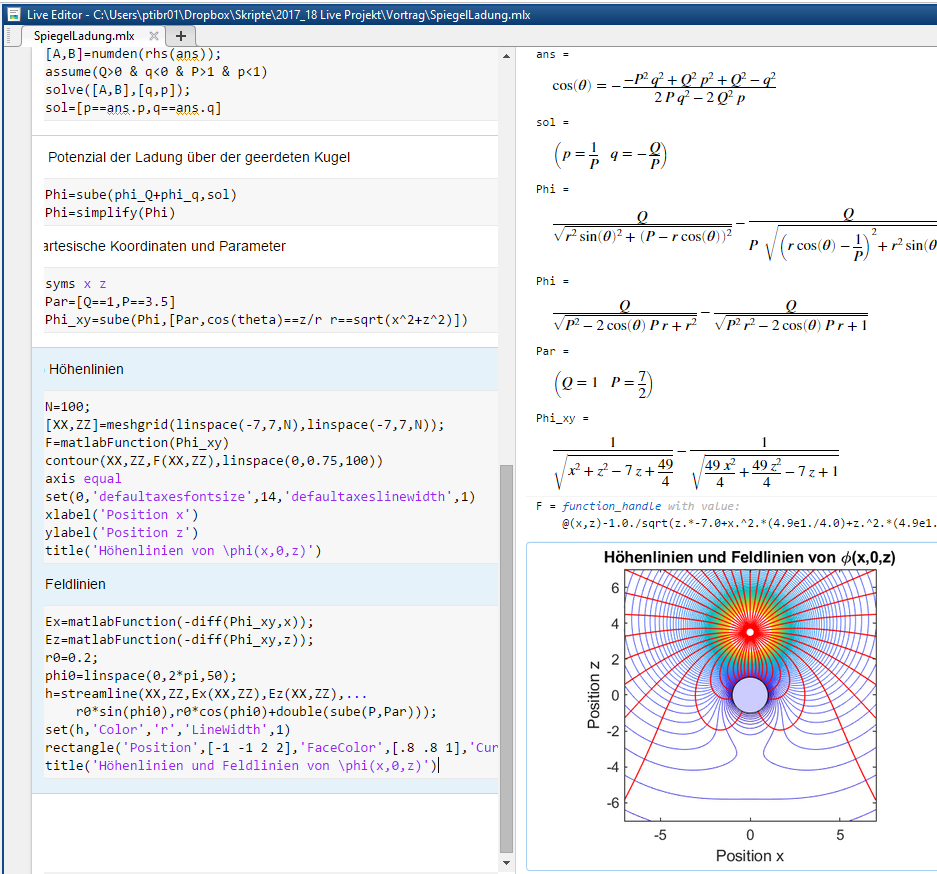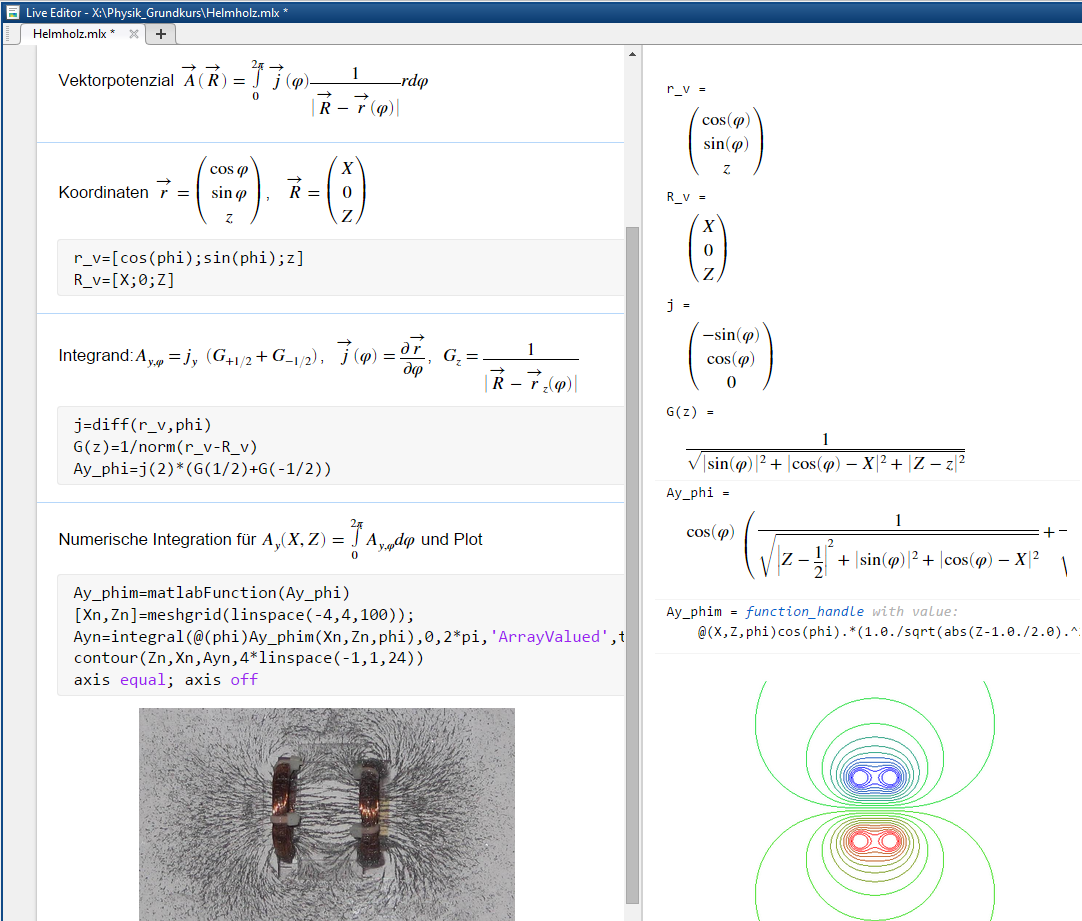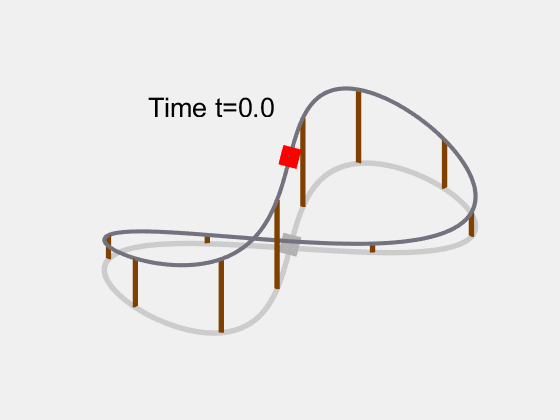 |
 Institut für Theoretische Physik |
Basic Physics Course with
MATLAB's Symbolic Toolbox and Live Editor

|

|

|
Introduction
This course is intended to help review and deepen the understanding of basics in physics.
We work out the essentials, we try to clarify why the laws of physics are as they are and how the details are connected. Since it is assumed that the reader possesses fundamental knowledge of physics and mathematics, a more modern view of physics, mathematics and computation can be taken.
In the center of our considerations is the action field. It is introduced as scalar field whose four-gradient determines the four-momentum. It is considered as fundamental invariant expression of physics.
We get to classical mechanics by action on point particles, and to quantum mechanics by action on detectors. The laws of interaction evolve from the continuity equation for the gradients of the momentum components, where the latter is the gradient of the action function.
For the derivation of physical laws, we sometimes use symbolic computer software. This helps avoid long calculations which distract from the actual physics. For exercises, we use symbolic and numeric computer software. This allows for more complicated problems, vivid graphics and a lot of animations. Students like it, it is play-like, and computers are their way to deal with all kind of affairs.
As computer language we apply MATLAB’s Symbolic Math Toolbox in the Live Editor. MATLAB itself offers powerful methods for diverse numerical problems and graphic representations. The Symbolic Math Toolbox is very modern, and having both the symbolic and the numerical methods in the same editor is fascinating. With a simple statement, one can convert symbolic expressions and continue with numerical methods.
Please note!
The file sube.m is required in MATLAB's work directory to run mlx-files in the Live Editor.
